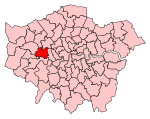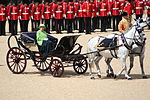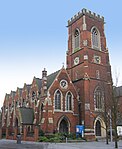Twyford Church of England High School
Academies in the London Borough of EalingActon, LondonChurch of England secondary schools in the Diocese of LondonSecondary schools in the London Borough of Ealing
Twyford C of E High School is a co-educational Church of England Academy school located in Acton, west London. It consists of just under 1500 pupils aged 11–18 (with over 500 students in the Sixth Form) and has specialisms in music, science and languages. On 1 October 2011, the school converted to academy status and is now operated by the Twyford Church of England Academies Trust. It has been rated as "outstanding" by the Schools Inspection Agency, Ofsted.
Excerpt from the Wikipedia article Twyford Church of England High School (License: CC BY-SA 3.0, Authors).Twyford Church of England High School
Twyford Crescent, London Acton (London Borough of Ealing)
Geographical coordinates (GPS) Address Nearby Places Show on map
Geographical coordinates (GPS)
| Latitude | Longitude |
|---|---|
| N 51.5092 ° | E -0.2788 ° |
Address
The Elms Building
Twyford Crescent
W3 9RA London, Acton (London Borough of Ealing)
England, United Kingdom
Open on Google Maps





